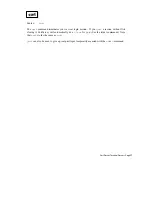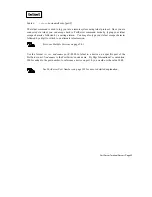
PortServer Terminal Server
Ÿ
Page 51
ports
Syntax:
set ports
option=value
Use
set
ports
to set or display device configuration parameters.
set
ports
range
is used to
specify multiple ports, or one specific port. Options are:
auto
bin
dest
dev
dport
edelay
group
sess
range
save
termtype
uid
Each of the preceding will have their own options, as outlined in the following descriptions.
(More than one option can be included in a command.)
auto=on
|
off
auto
on
is used in conjunction with
uid
,
dest
and
dport
, to set up a port so that a
user on that port will bypass the PortServer's command shell and automatically
connect to the defined destination. (Also see set users name=auto on page 56,
which is similar except that a specified User is always connected to the specified
destination, bypassing the PortServer's command shell, without regard to what port
that user is using.) Important!
login
must be set to
on
for Auto users—see set
logins login= on page 50.
bin=on
|
off
Used in conjunction with
auto
to specify a binary connection. Default=
off
dest=
IPaddress
Use to specify the destination for the auto port. (See
set
ports
auto
).
dev=
value
Set the port to a device as indicated in value. Possible values are
term
,
host
,
prn
,
min
,
mout
,
mio
:
term
Set the port to be a terminal.
host
Set the port to mimic a modem for input only.
prn
Set the port to be a printer.
min
Set the port to be a modem for input only.
mout
Set the port to be a modem for output only.
mio
Set the port to be a modem for input and output.
Also see Devices and Wiring Considerations on page 81.
















































